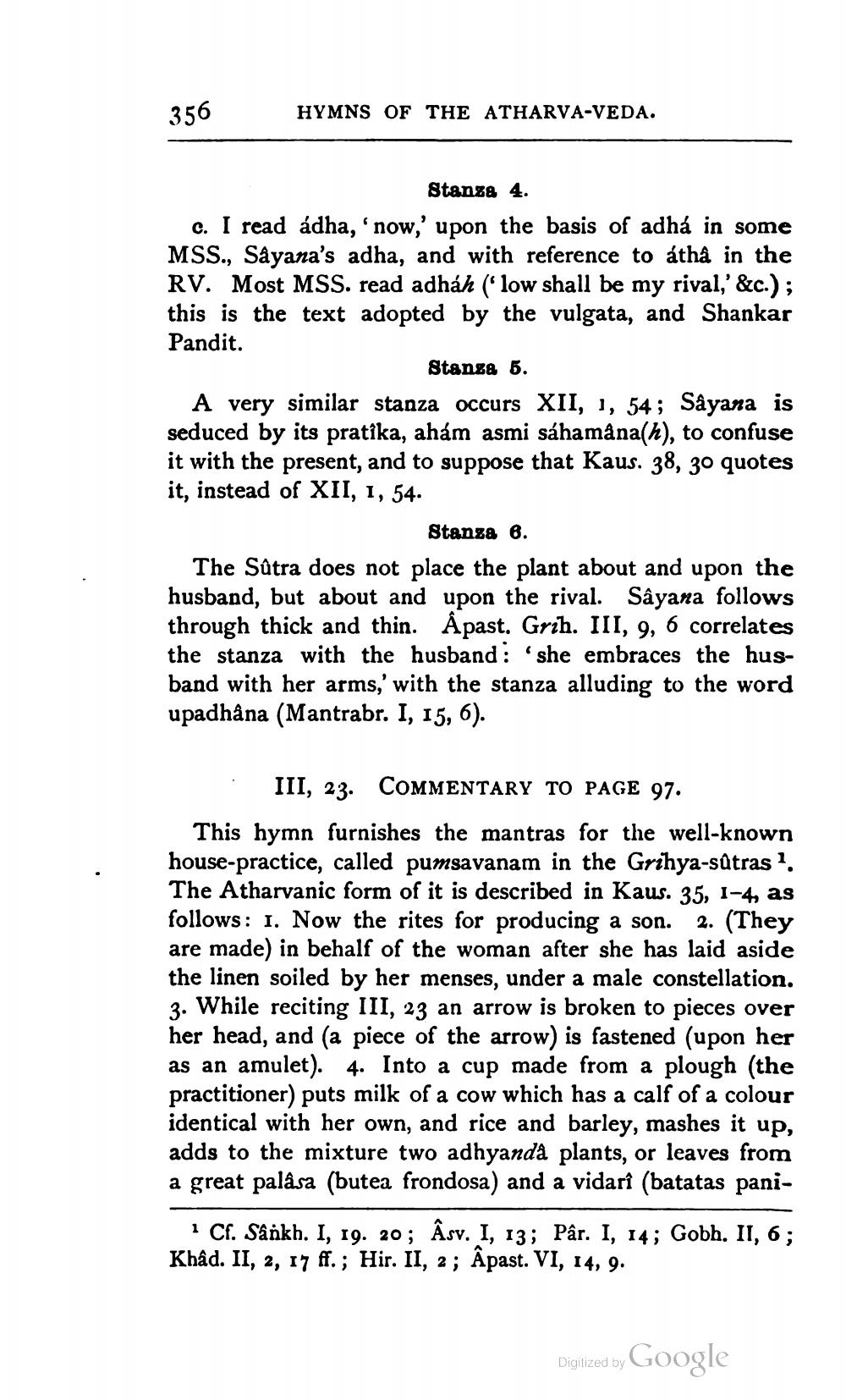________________
356
HYMNS OF THE ATHARVA-VEDA.
Stanza 4. c. I read ádha, 'now,' upon the basis of adhá in some MSS., Sâyana's adha, and with reference to átha in the RV. Most MSS. read adháh ('low shall be my rival,' &c.); this is the text adopted by the vulgata, and Shankar Pandit.
Stansa 5. A very similar stanza occurs XII, 1, 54; Sâyana is seduced by its pratika, ahám asmi sáhamâna(h), to confuse it with the present, and to suppose that Kaus. 38, 30 quotes it, instead of XII, 1, 54.
Stanza 6. The Sûtra does not place the plant about and upon the husband, but about and upon the rival. Sâyana follows through thick and thin. Åpast. Grih. III, 9, 6 correlates the stanza with the husband she embraces the husband with her arms,' with the stanza alluding to the word upadhâna (Mantrabr. I, 15, 6).
III, 23. COMMENTARY TO PAGE 97. This hymn furnishes the mantras for the well-known house-practice, called pumsavanam in the Grihya-sútras ? The Atharvanic form of it is described in Kaus. 35, 1-4, as follows: 1. Now the rites for producing a son. 2. (They are made) in behalf of the woman after she has laid aside the linen soiled by her menses, under a male constellation. 3. While reciting III, 23 an arrow is broken to pieces over her head, and (a piece of the arrow) is fastened (upon her as an amulet). 4. Into a cup made from a plough (the practitioner) puts milk of a cow which has a calf of a colour identical with her own, and rice and barley, mashes it up, adds to the mixture two adhyandà plants, or leaves from a great palåsa (butea frondosa) and a vidari (batatas pani
1 Cf. Sankh. I, 19. 20; Âsv. I, 13; Pâr. I, 14; Gobh. II, 6; Khâd. II, 2, 17 ff.; Hir. II, 2; Apast. VI, 14, 9.
Digized by Google




